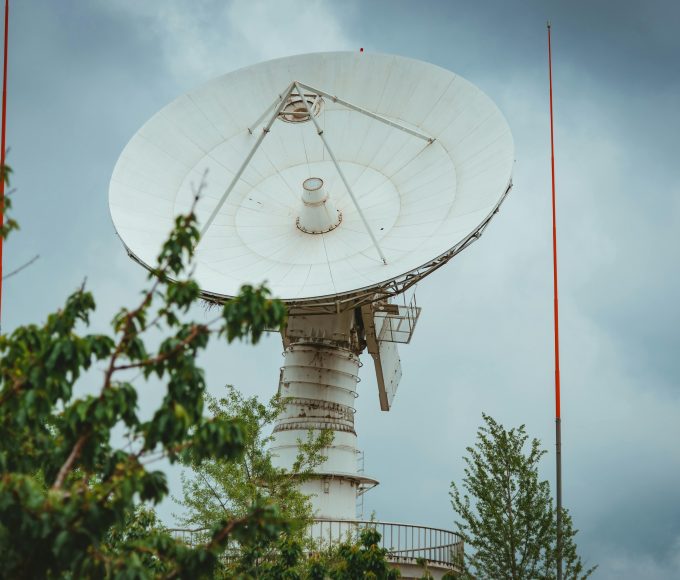- News
Sweet 16! Engen Rocks as SA’s Coolest Petrol Station
October 24, 2025- Entertainment
Carol Ofori: Finding Her Voice, Sharing Her Light
November 13, 2025- Health & Beauty
- Tech
HUAWEI WATCH GT 6 Pro is the best smartwatch to own in 2025
October 23, 2025HUAWEI Pura 80 Series arrives in South Africa
August 6, 2025- Tourism
- News
Sweet 16! Engen Rocks as SA’s Coolest Petrol Station
October 24, 2025- Entertainment
Carol Ofori: Finding Her Voice, Sharing Her Light
November 13, 2025- Health & Beauty
- Tech
HUAWEI WATCH GT 6 Pro is the best smartwatch to own in 2025
October 23, 2025HUAWEI Pura 80 Series arrives in South Africa
August 6, 2025- Tourism

As winter arrives in South Africa, residents are being urged to brace themselves for a significant drop in temperatures.
The country has already country experienced its first cold front of the season, with temperatures hovering around 20°C and below in various regions. As the chill sets in, both drivers and their vehicles face a unique set of challenges that require immediate attention.
Eugene Hebert, CEO of MasterDrive, emphasises the importance of preparation during this transitional period. “There are several steps that can reduce the risk that naturally comes with the change of season,” Hebert asserts, highlighting the need for a thorough vehicle check-up before embarking on winter journeys.
How to prepare your vehicle
Cold weather can wreak havoc on your vehicle’s performance. Here are some essential checks to conduct:
Oil Levels: Colder temperatures increase oil density. Ensure that your oil levels are correct, being cautious not to overfill as this can lead to complications.
Tyre Tread: Regularly check the tread on your tyres, as they experience increased wear in cold conditions.
Tyre Pressure: A drop of 10°C can reduce tyre pressure, so regular monitoring is key. If your warning light indicates low pressure, wait for the air to warm up before inflating.
Windscreen Wipers: Inspect for any perishing; condensation can occur even in drier regions, obscuring your view.
Washer Fluid: Ensure levels are adequate, using freeze prevention fluid in below-zero temperatures.
Coolant: Regularly check that your coolant is topped up, as it helps maintain vehicle fluid circulation even in freezing temperatures.
Battery Care: Protect your vehicle’s battery by parking it indoors when possible and conducting maintenance on lead-acid batteries as necessary.
How to prepare yourself as a driver
Driving in colder weather requires heightened caution and attentiveness. These essential tips can help:
Increase your following distance and do not use cruise control when temperatures fall or during rain.
Avoid driving through pooled water, which could lead to hydroplaning.
Where icy conditions are likely, particularly under bridges, exercise extra care.
In poor visibility conditions, such as mist, use fog lights or low beams; bright lights can worsen glare.
Only activate emergency lights when stationary.
Be gradual and cautious when braking, giving yourself ample time to stop.
Reduce speed around corners and in adverse weather conditions.
Switch on your headlights for every trip to improve visibility.
Adjust your driving times to avoid glare at sunrise and sunset, and consider wearing polarised sunglasses.
As winter settles in, taking these proactive steps to prepare both your vehicle and yourself is essential. By following the guidance of experts like Eugene Hebert, drivers can reduce the risks associated with winter driving, ensuring safer journeys for all.

Categories
Recent Posts
Carol Ofori: Finding Her Voice, Sharing Her Light
November 13, 2025South African Fashion Takes Centre Stage at AFI Harvest Table
November 13, 2025Related Articles
Small but Luxe: The Rise of Cape Town’s Independent Hotels
A Big City With Boutique Charm Cape Town has long held global...
August 4, 2025Classic Cars Shine at Creative Rides Auction
This past Saturday, the Creative Rides showroom in Bryanston revved to life...
July 21, 2025Cici Returns With Powerful New Album Busisiwe 2.0
South Africa’s platinum-selling songstress Cici is back — stronger, bolder, and more...
July 21, 2025Junior Boks Claim U20 World Title with Grit, Gees and Glory
South Africa’s next generation of rugby heroes made history on Saturday night...
July 21, 2025
Subscribe To Our Newsletter
Join our mailing list to receive the latest news on what's trending in the world of travel, beauty, fashion, tech, finances and more.
You have Successfully Subscribed!
- Entertainment
- Entertainment
































